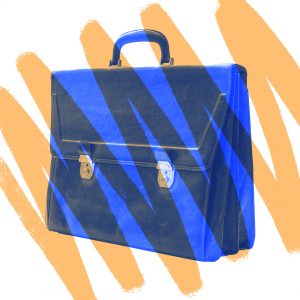Slang dictionary
career cushioning
[ kuh-reer koosh-uh-ning ]
What is career cushioning?
Career cushioning is an informal term for the practice of lining up future job opportunities while still employed at one’s current job.
Career cushioning can involve a variety of actions that involve looking for a new job, including developing new skills, browsing job listings, and applying for new jobs.
Typically, career cushioning is performed by a person who has some reason to fear that they will be fired or laid off from their job. In these cases, the goal is to look for a new job that they can easily transition into if and when they lose their current one.
The term career cushioning is sometimes used in the same context as quiet quitting, and both terms began to become popular around the same time in 2022. However, the term career cushioning doesn’t imply reducing the amount of effort devoted to one’s current job, as quiet quitting does.
Example: I think I might get laid off soon, so I’ve been doing some career cushioning just in case.
Where does career cushioning come from?

The action that career cushioning refers to predates the term itself, which gained usage at the end of 2022 and the beginning of 2023. Many media outlets theorized that the term’s emergence was due to widespread fear that was caused by the possibility of an impending recession and a large number of layoffs that occurred in the tech industry at the time.
A common theory is that the term career cushioning is based on the earlier dating slang word cushioning. This slang term refers to a person being open to alternative romantic partners in case they break up with their current one. These “backup” partners act as a kind of cushion that a person could fall back on to lessen the pain of a breakup. Career cushioning applies this same idea to a person’s career, using potential new jobs in place of romantic partners. However, the word cushion is also used in similar ways in other contexts, such as adding a cushion to one’s savings.
Examples of career cushioning
Who uses career cushioning?
Career cushioning is used informally, typically in the context of workforce trends.
English for HR: "career cushioning” means planning a plan B while still employed, especially in case of job cuts. #BusinessEnglish #HR
— Marcin Jezierski (@MaJezierski) January 16, 2023
First came the Great Resignation, then quiet quitting. Now career cushioning is the workplace catchphrase you need to know. What is it? Career cushioning is the act of discreetly lining up a Plan B, while fully employed
— Paul Stausberg (@p_stausberg) November 27, 2022
Like the similar term quiet quitting, the term career cushioning is often criticized as being an unnecessary buzzword that implies a workplace behavior is newer than it actually is.
"Career cushioning" is in the same vernacular like "Quiet quitting." We've all been quiet quitting and career cushioning, we just didn't call them that. Working to the expectation of your job and keeping an eye out for a better job are not new ideas.
— Chaos Comet (@DarkChaosComet) December 20, 2022
Real question: can we stop using dumb terminology for things. First it was quiet quitting, then quiet firing, now career cushioning.
It's a distraction.
— Jennifer Brick (@ccjenniferbrick) December 15, 2022
Note
This is not meant to be a formal definition of career cushioning like most terms we define on Dictionary.com, but is rather an informal word summary that hopefully touches upon the key aspects of the meaning and usage of career cushioning that will help our users expand their word mastery.